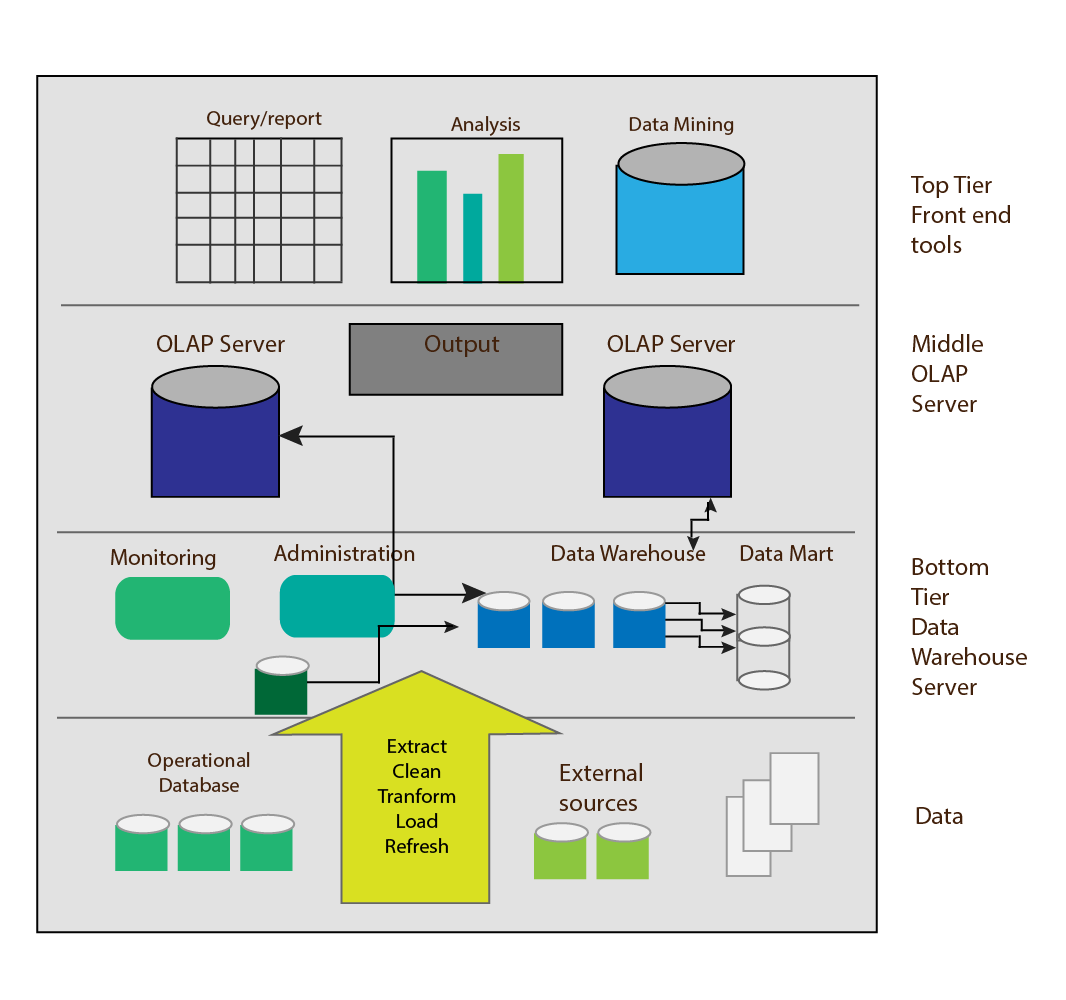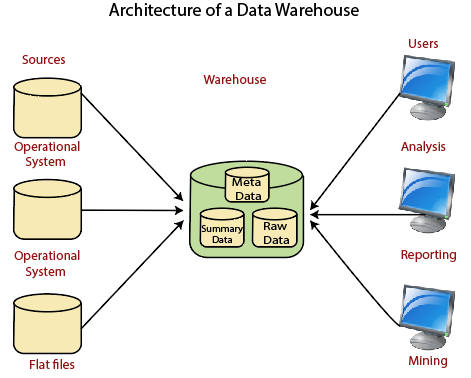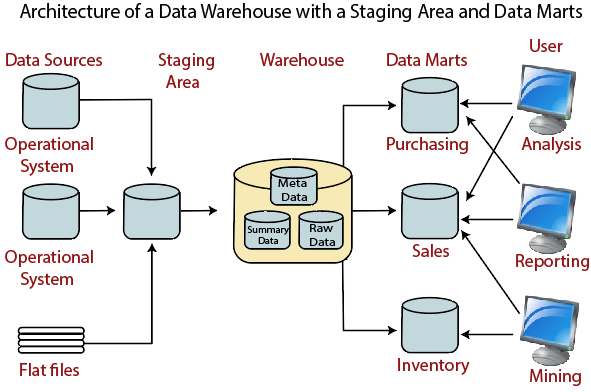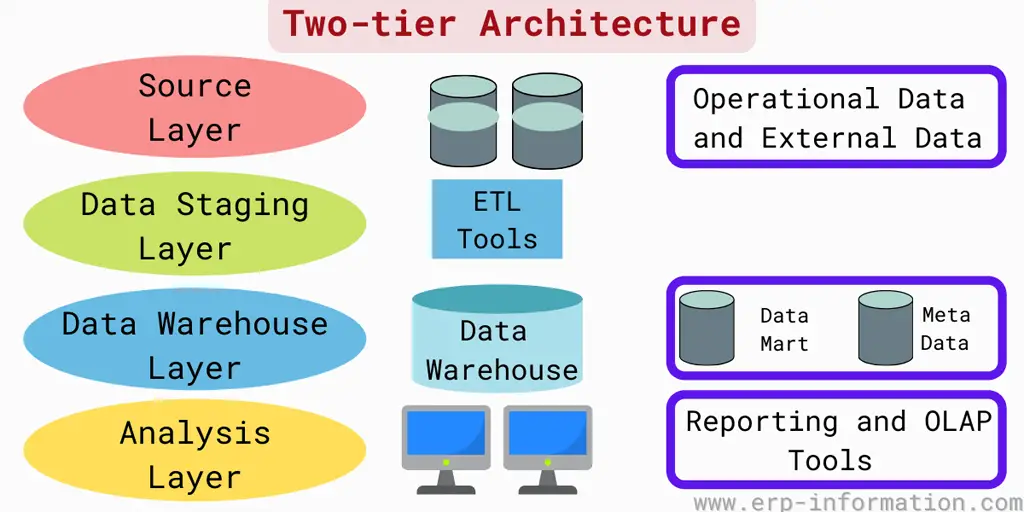
Often analysts will want to write longer one-off queries for reporting and experimentation purposes. Storing data for reporting and experimentation

This helps save on storage costs but is another reason why it’s important to always have a copy of all your raw data.
DATA WAREHOUSE ARCHITECTURE FULL
These are similar to permanent tables except they don’t have a full history available on Snowflake. Keep in mind that tables created in Snowflake using dbt are transient tables. Your “DATA_MART_PROD” tables should be created daily, or more often, by using an orchestration solution. I call mine “DATA_MART_DEV” and “DATA_MART_PROD”.īoth of these databases read from the tables in the “BASE” database but one is for testing the creation of your data models and one is validated, orchestrated, and depended on by the business. You don’t want one database to contain both development and production models, so it is best to create a different database for each. These require both a development and production environment. Views don’t need to be automated and deployed each day because they simply read from your raw data.Īs with your other transformations, these will be the more complex models you build using dbt. Because this data is always the same, no matter in development or production, there is no need to create separate environments. Rather you are creating a layer that lives on top of it. This saves costs within your Snowflake warehouse because you aren’t storing a full copy of the underlying data. “BASE” data models are also views rather than tables. dbt commonly refers to this as “STAGING”. I call mine “BASE” for simplicity's sake. This is essentially a database similar to your “RAW” database but with basic transformations such as data type casting and field name changes. Your data models should always read from another Snowflake database that contains these base models. It is a best practice when designing your Snowflake architecture to avoid having your transformations read from your raw database. I wrote another article about creating a dbt style guide for these base models. These are basic transformations that are done on the raw data in order to make them ready to use in data models by analysts and analytics engineers. First, and the simplest, are base models. Now, there are a few types of transformations that happen within the data warehouse. And the location where you store reporting and experimentation. The location where data transformations occur (usually with dbt). The location where you ingest your raw data. There are three main components to your data warehouse. Snowflake tables and views contain the columns and rows of a typical database table that you are familiar with. Lastly, the most granular level consists of tables and views. Snowflake databases contain schemas to further categorize the data within each database. A Snowflake data warehouse architecture is composed of different databases, each serving its own purpose. Snowflake also makes it easy to share data among many users.īefore we get into all of the decisions that you need to make about your data warehouse architecture, let's discuss the components of a Snowflake data warehouse. Snowflake is fast and allows you to easily scale up or down your compute power based on your budget.

Snowflake is built specifically on the cloud, meaning you and your team can access it wherever, whenever. Snowflake is what I believe to be the best data warehouse on the market. I’ll be specifically referencing Snowflake as my data warehouse solution throughout this article. Why choose Snowflake as your data warehouse? I cover deciding on your data warehouse solution, determining your databases, schemas and different types of tables. In this article, I explain how I organize my Snowflake data warehouse so that as little as possible goes wrong. It is imperative that it is done correctly, considering different factors like development and production, security, and business use cases.


The integrity of your data depends on the analytics engineers, data engineers, and data analysts that set this solution. And one that you need to make sure you do right. Data then flows out of it to business users and data visualization platforms.Īll data exists within your warehousing solution. Data is transformed within it using SQL and modern data transformation tools like dbt. Data flows into it through data ingestion tools like Airbyte, making sure raw data is available. Your data warehouse is the hub of your modern data stack.



 0 kommentar(er)
0 kommentar(er)
